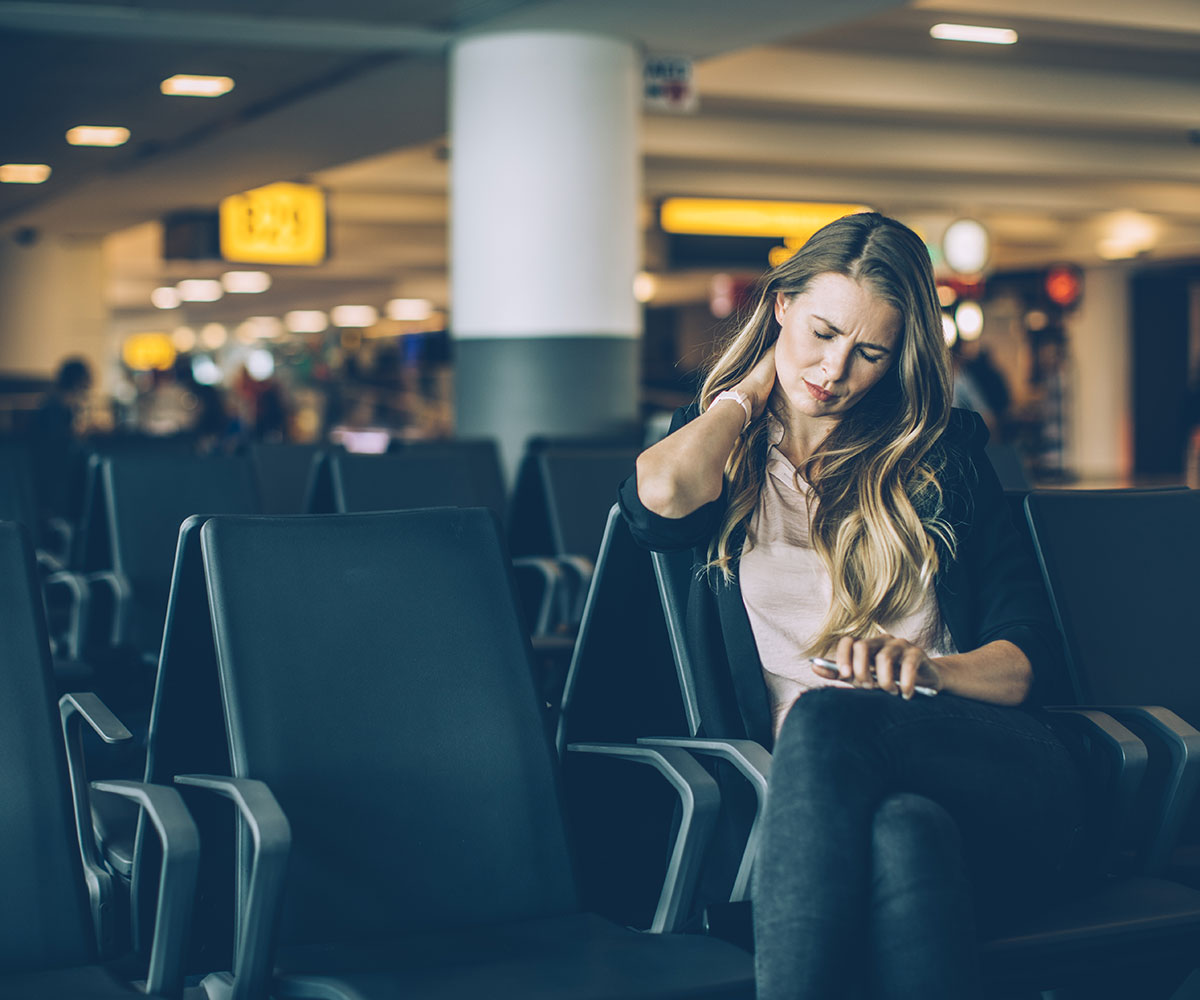1. Reduce movement
The reason people experience motion sickness is due to the physical sensation of movement not matching the visual cues that they’re stationary. For example, you’re on a ship and everything in your cabin looks still, but your body senses the room is moving.
To avoid this, choose a lower-level cabin near the middle of the ship. This will help reduce the amount of swaying.
“The higher you are on a ship, the more motion you’re likely to feel,” explains Dr Deborah Mills from the Travel Medicine Alliance.
2. Get in the pool
On a cruise ship, you may find getting into a swimming pool or bathtub alleviates your seasickness.
“This is because water acts likes a cushion to reduce movement,” Deborah reveals.
“When you’re underwater, you’re not moving as much, so you feel better.”
3. Look to the horizon
If you’re in a car, sit in the front passenger seat so you can see the road ahead. Keep looking forward and don’t focus on objects passing by, such as trees and houses.
“It means you can automatically adjust to sudden changes in movement, such as going around a corner, so it’s not such a surprise,” Deborah says.
Similarly, if you’re on a bus or train, ensure you’re facing the way the vehicle is travelling.
4. Keep refuelling
Never travel on an empty stomach. This can make you more susceptible to motion sickness. Instead, eat 45 to 60 minutes before you set off and have a few nibbles on the way.
“Avoid eating spicy or greasy foods and opt for crackers, pretzels or other carb-heavy snacks,” Deborah advises. These are easier to digest and can lessen nausea.
And if you’re offered a beer or wine on the plane, you may want to consider turning it down.
“Drinking alcohol during a trip will make motion sickness worse,” she warns.
5. Pre-treat with ginger
Because it’s easier to prevent motion sickness than deal with its symptoms, if you know you’re prone to nausea, nip it in the bud with ginger.
“This ancient root is very effective when it comes to evading seasickness – although no-one really knows exactly how much to use,” explains Deborah.
A study published in the journal The Lancet found that people who consumed ginger over the course of a four-hour sea voyage reported less motion sickness compared to those who didn’t take it.
“Try it in tea, lollies, soups or supplements,” says Deborah.

6. Stay well hydrated
Dehydration can worsen the symptoms of motion sickness.
“The body doesn’t function very well if it’s depleted of its fluids,” explains Deborah.
Ensure you are properly hydrated by drinking plenty of water and avoiding coffee. Potassium-rich foods and drinks, such as bananas and coconut water, can help to rehydrate you for your journey.

7. Indulge your sweet tooth
There’s a misconception that consuming fizzy drinks will ease motion sickness but, as Deborah tells, it’s not the bubbles that make you feel better, it’s the sugar.
“In theory, if you’re a bit dehydrated, the bubbles may help sugar absorb into your bloodstream quicker, but there’s no evidence to prove that,” she adds.
“Fizzy drinks are particularly bad if you’re flying because as you ascend, the air bubbles expand and you get a pain in the gut.”
Deborah says it’s better to have an electrolyte drink, which has added salt to help you absorb sugar. Alternatively, allow your fizzy drink to go totally flat before drinking it.
8. Take an anti-histamine
While many people take anti-nausea medications to prevent travel sickness, Deborah says they generally don’t work because they act on the wrong part of the brain. A more effective over-the-counter medication is an antihistamine. However, they can cause drowsiness, so ideally they should be taken before you set off.
“Take one the night before you leave so you can rest through the sleepy stage and enjoy the anti-motion sickness benefits the following day,” she advises.
9. Talk to a pharmacist
Hyoscine (also called scopolamine) is the most effective medicine for travel sickness. It works by preventing confusing messages from entering the brain and comes in the form of a chewable tablet or extremely effective adhesive patch. It does cause side-effects, however, so be sure to ask your pharmacist if it’s right for you.
10. Try a new perspective
Since motion sickness is really a mismatch between what your body and brain is experiencing, try walking around to change your brain’s perspective.
Deborah says, “If you still can’t shake off the nausea, lie down on a flat surface with your head still to reduce movement.”


